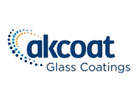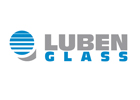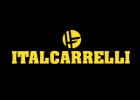Canadian Premium Sand Inc. (“CPS” or the “Company”) (TSXV: CPS) is pleased to announce a shift in the direction of the Company’s business strategy to focus on developing its Wanipigow silica sand deposit into a sustainable float glass manufacturing and coating facility. This facility would be designed to utilize the best available technology with a focus on sustainability initiatives such as waste heat recovery and optimizing use of Manitoba’s abundant and inexpensive renewable electricity to set a new standard for low-carbon footprint glass manufacturing. The greater Winnipeg area presents an opportunity for significant long-term manufacturing cost and logistics advantages for a float glass facility focused on energy efficient architectural glass or solar glass.
The shift in business strategy is the result of an internal review of the various applications for the Company’s silica sand deposit which identified float glass manufacturing as a high potential application for which the Company’s silica sand is ideally suited. Float glass manufacturing has shown better overall project economics and market stability compared to Wanipigow proppant production. This internal review is supported by an independent business study commissioned by the Company and conducted by an independent international glass markets focused consulting group, GlassGlobal Consulting GmbH (“GlassGlobal”). A full summary of the revised strategy and information on the business opportunity can be viewed at www.wanipigowglass.com.
“Today there is not a single float glass manufacturing facility in Canada”, stated Glenn Leroux, President and CEO of CPS. “Every pane of glass utilized in this country is imported. Based on the business study and market projections completed by GlassGlobal, current dynamics in North America show a manufacturing supply deficit demonstrating the requirement for up to four additional float glass facilities by 2025 for North America to be self-sufficient. Establishing a float glass facility in Canada using responsibly sourced local raw materials and responsibly produced Canadian energy creates a unique opportunity to provide much needed sustainably manufactured float glass to Canadian, North American and international markets in an environmentally responsible manner.”
Float glass is a broad industry term for an established and proven method of producing flat panes of glass. Numerous products begin their useful life as float glass including glass with specialized energy efficient coatings for architectural applications, glass for solar panels, automobile glass, tempered and safety glass. Energy consumption by buildings is a significant source of Canada’s overall greenhouse gas emissions. Use of energy efficient architectural float glass in residential homes and commercial buildings is a key component of emissions reduction strategies as outlined by the federal department of Environment and Climate Change Canada in ‘Canada’s Buildings Strategy’ document. The demand for solar glass to manufacture solar panels is expected to accelerate in the coming years as a result of global electricity grid de-carbonization and net-zero climate action plans. Energy efficient architectural glass and solar glass are both carbon-negative products based on a life-cycle carbon assessment as they save or avoid more energy consumption and associated emissions after installation of end use products than is consumed during manufacturing.
Preliminary test work shows that the Wanipigow Lower Black Island Formation (LBI) sand at the test site has potential for use in the manufacture of ultra-clear, energy efficient architectural float glass as well as solar glass for use in solar panels. The testing of a small subset of the Company’s silica sand was conducted by an independent ISO/IEC 17025:2018 accredited laboratory specializing in glass and raw materials analysis, the IGR - Institut für Glas- und Rohstofftechnologie (Institute of Glass and Raw Material Technology - IGR). Three individual samples were collected from archived drill cores for test work and focused on a portion of the overall Wanipigow sand deposit within the deposit’s LBI sub-unit. The test work was performed in accordance with standard testing of oxidic raw materials for glass (DIN 51086-2) and included sieving, ICP-OES analysis, beneficiation tests followed by additional ICP-OES analysis, and melt tests. The preliminary results demonstrate that the LBI sand at this locale: i) contains high calculated silica (94.1% to 97.2% SiO2) with low detrimental elements such as iron, ii) is easily beneficiated to higher calculated silica (99.3% to 99.5% SiO2) using standard methods such as a bumping table and a magnetic separator, and iii) melt tests yielded no microscopic relics of un-melted grains.
The Company expects to engage a Front-End Engineering and Design (FEED) contractor during the first quarter of 2021 to work on site selection, facility design, site layout, and potential capital and operating costs. The Company will also initiate offtake discussions in concurrence with the FEED study and add glass industry expertise to the management team to develop a robust business plan to achieve a final investment decision.
The Company’s silica sand deposit is extensive as detailed in a National Instrument 43-101 (“NI 43-101”) compliant Technical Report dated March 20, 2020. This report was based primarily on silica sand for the oil and gas industry. Based on the typical silica sand requirements of a single float glass plant, the Company has ample silica sand supply to also pursue other industrial market opportunities. The presentation is available here
Technical Disclaimer
The Company advises and wishes to make clear that it is not basing any future decision to produce trial or commercial glass products from the Lower Black Island Formation sand on a current economic analysis in a Preliminary Economic Assessment (“PEA”) or mining study (Pre-Feasibility or Feasibility Study) to demonstrate the economic and technical viability of the project. Accordingly, there is increased uncertainty and specific economic and technical risks of failure associated with any production decision. These risks, among others, include areas that are analyzed in more detail in a PEA or Feasibility Study, such as applying economic analysis to resources or reserves, more detailed metallurgy, and a number of various specializing studies.
Mr. Roy Eccles P. Geo., a “Qualified Person” within the meaning of NI-43-101, has reviewed and approved the scientific and technical content associated with this News Release and who by reason of education, affiliation with a professional association (as defined in NI 43-101) and past relevant work experience, fulfills the requirements of a Qualified Person as defined in NI 43-101, and he is independent of the Company applying all of the tests in Section 1.5 of NI 43-101CP.
Neither the TSX Venture Exchange nor its Regulation Services Provider (as that term is defined in the policies of the TSX Venture Exchange) accepts responsibility for the adequacy or accuracy of this release.


























